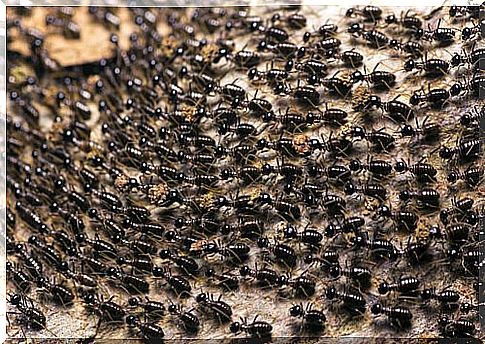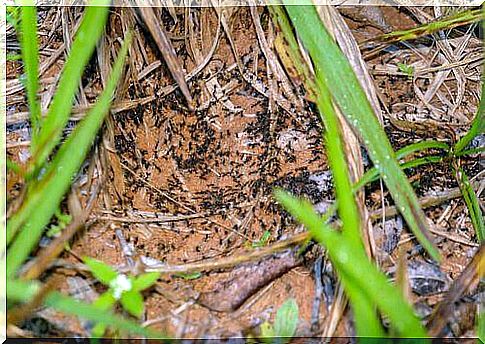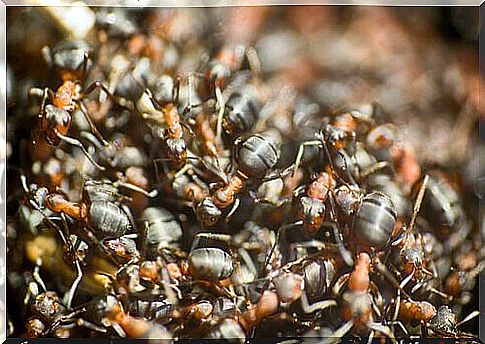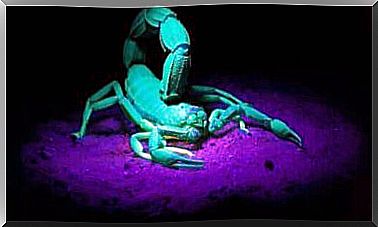The Fascinating World Of Legionary Ants

About 200 species of these hymenoptera are known as legionary ants, since they have a strong predatory and nomadic footprint. But, despite their bad reputation, they also perform the function of controlling and limiting the number of insects that share the same habitat with them . In this article we will reveal everything you need to know about them.
Legionary ants: combative and nomadic
Known for their forays into the jungle in search of food, these ants were immortalized in a classic film, ” White Fury ” (1954), starring Charlton Heston.
This is due to their intrinsic characteristics. We are talking about very voracious insects that are able to make a clean sweep, on the vegetation and also by attacking small animals, while moving from one side to the other, without ever residing in a fixed anthill.
But in addition to their predatory nature, these fearsome ants are distinguished by the lack of permanent anthills. In fact, any colony moves, moving continuously, for the duration of its existence.
Insects with nomadic habits
Ants are eusocial insects that belong to the order of the hymenoptera. This includes about 14,000 known species, but it is estimated that there are 22,000 in total. And, as we said at the beginning, about 200 of them are made up of legionary ants only.

These species exhibit two behavioral phases: one stationary (or sedentary) and another nomadic (or wandering).
The first lasts from two to three weeks, and shows a decrease in their activities. It is the time when the larvae turn into pupae and the queen increases the size of her abdominal area, due to the large number of eggs she produces.
On the other hand, in the nomadic phase, legionary ants begin to move during the day – although some species prefer to move at night – in search of food. These war “raids” are followed by some insectivorous birds, while small vertebrates flee as they try to avoid the destructive procession carried out by the fearsome legionaries.
The nests of legionary ants
At night, legionary ants build emergency nests on the spot and with their own bodies. They are actually very well organized ants and can create them on tree trunks or inside holes made by themselves.
In this real “living nest”, the youngest specimens take refuge inside and the older specimens in the external area. Rooms and tunnels are created, to allow the queen to rest, protect the larvae and eggs.
In the event of an alarm or danger, however minimal, the ants move to the top of the nest to defend it with their powerful jaws and, in the case of other species, even with their stingers. In short, it is frankly impossible to penetrate inside.
How do legionary ants hunt?
Legionary ants feed mainly on insects. An adult specimen can consume up to 100,000 of these invertebrates every day. Therefore, their role in the ecosystem is crucial, since they limit and regulate the presence of small insects within the jungles.

But they usually also catch spiders and small vertebrates. In addition, it was found that, at times, they eat turtle eggs. And some species climb trees in search of bird nests.
To hunt their prey, legionary ants usually use a method known as swarm attack. They separate from the central mass in different ways, as if they were the roots of a tree. In this way, their prey is surrounded and trapped. Escape becomes practically impossible. They also make forays into the column.
At other times, to increase the chances of feeding, some ants move away from the main path, creating real advance patrols. In short, they are really interesting, organized and terribly ruthless animals. We are sure you will never want to run into a colony of hungry legionary ants!









